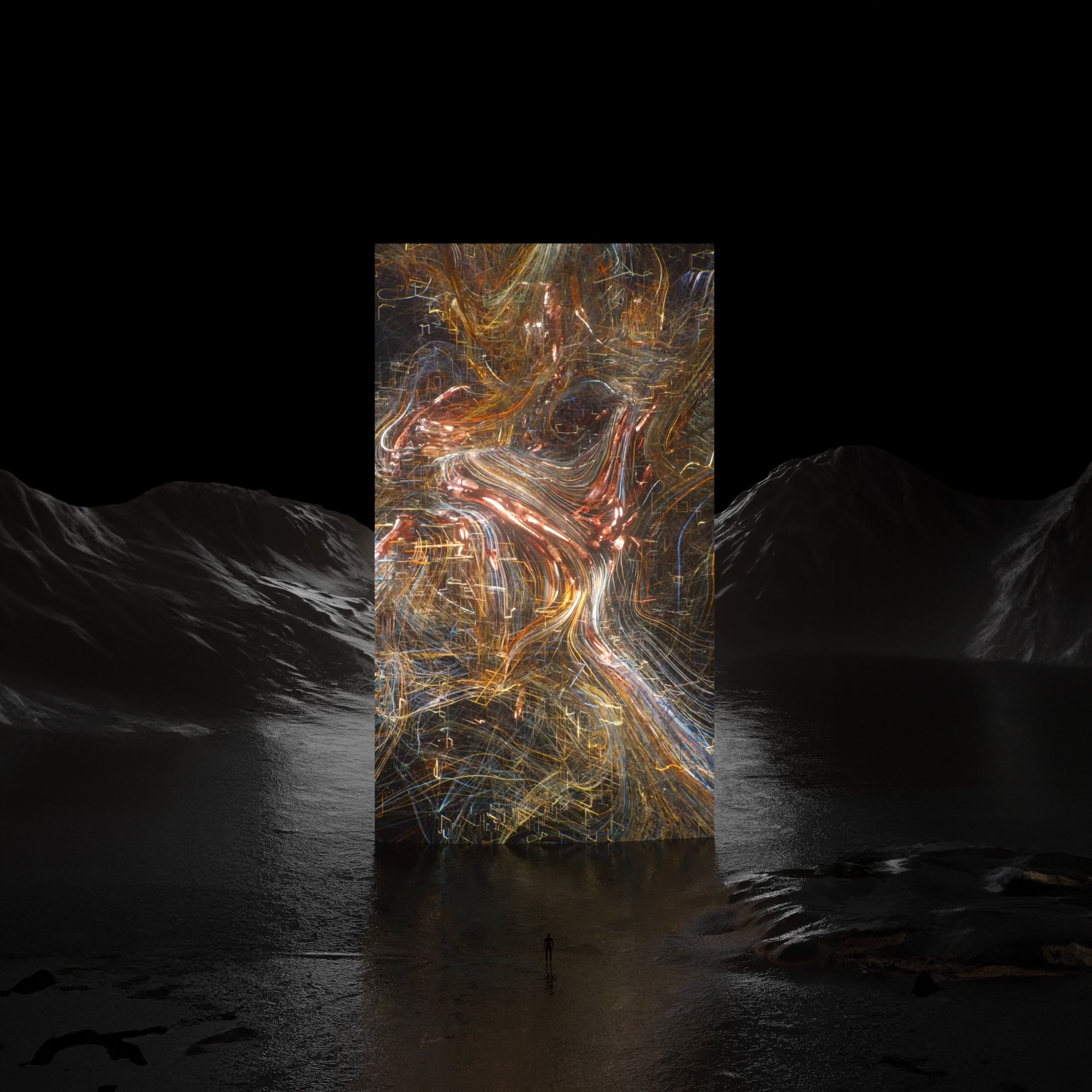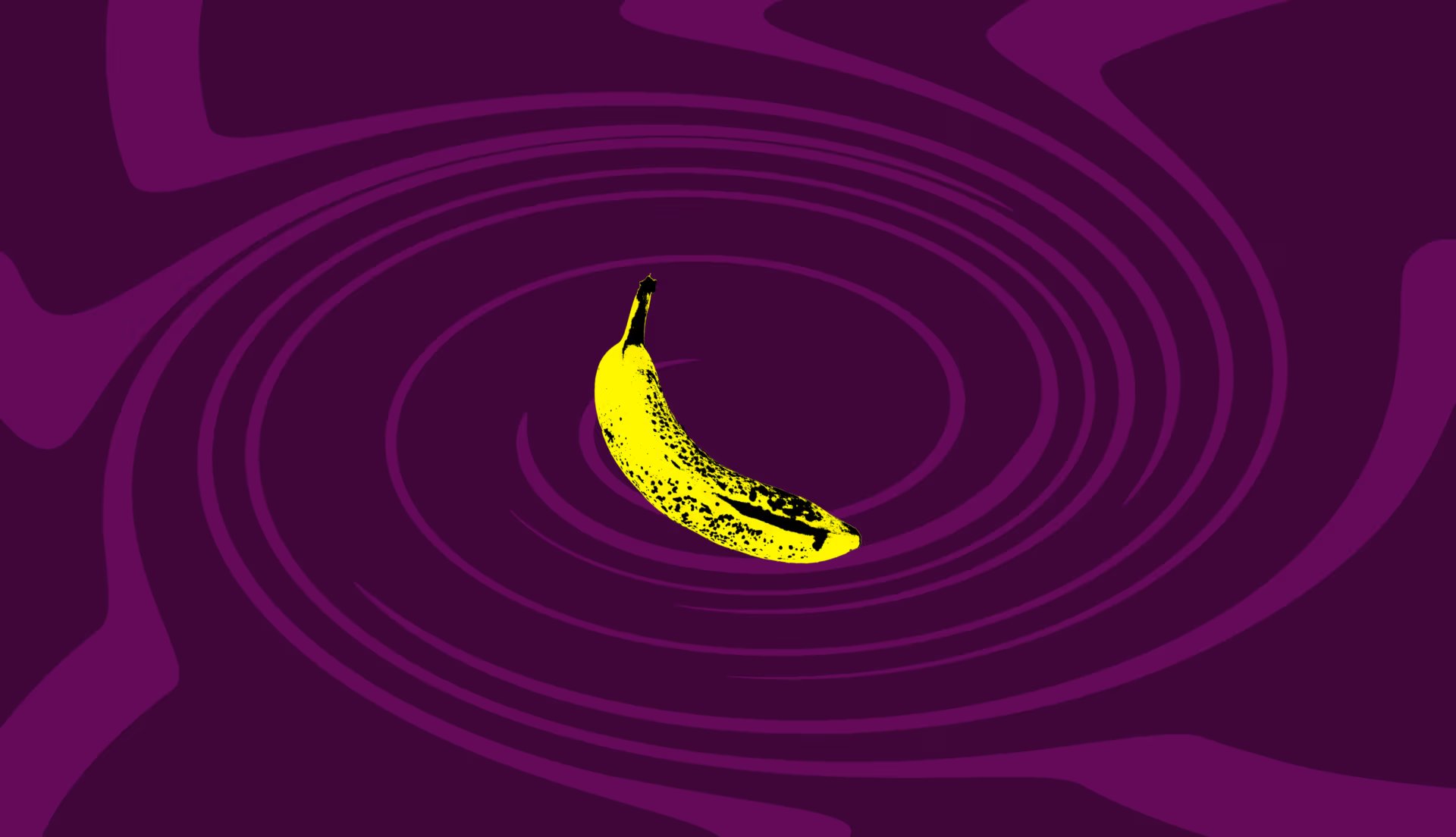About the Artist:
Orkhan Mammadov (b. 1990, Ganja, Azerbaijan) is a pioneering media artist from Azerbaijan who has emerged on the international scene since representing his home country in the Venice Biennial in 2019. He uses Islamic patterns and carpet illustrations and paintings as a dataset in his artificial intelligence & machine learning-driven cultural phygital data sculptures & paintings. His works reflect on the rapid and chaotic technological changes in the global context by rethinking middle eastern art & cultural heritage.
About the project - Muraqqa:
From the silent dawn of the universe to the vibrant tapestry of human existence, the Muraqqa Data Miniatures encapsulate our journey. Spanning eons, cultures have sung unique verses in humanity's epic, each leaving a mark on art and identity. Wars, diversity, and revolutions have sculpted our heritage, now reborn in "The Beginning of End". It is a fusion of ancient craft and machine creativity and explores the essence of art across eras. It's a transformative dialogue, challenging perceptions of art and technology. Here, history and future, analog and digital, converge, inviting us to rethink our role in a world shaped by our creations. Muraqqa; it's a philosophical quest, reimagining history with the glow of screens and the rhythm of code.
The Interview
An: Can you tell us more about your background and how you got started as a new media artist?
Orkhan: My foray into new media art traces its roots back to my teenage years, sparked by an early fascination with coding and design. This initial interest blossomed during my university years where I studied Visual Communication Design. It was here that I experienced a pivotal moment, leading me to shift my focus towards Experimental Media and Fine Arts. This transition marked the beginning of my realization of how my early passions for technology and design could intertwine with the expansive world of art.
As I delved deeper into this field, I began actively participating in audiovisual and new media festivals, which further shaped my artistic trajectory. This period was crucial in refining my skills and defining my artistic voice. My explorations and experiences culminated in a significant milestone in 2019 when I was honored with the invitation to represent my country at the Venice Biennale. This prestigious platform gave me the opportunity to showcase my first AI-driven installation, "Circular Repetition," a part of which later became my genesis piece on SuperRare, Repetition - GAN Latent Patterns, collected by OSF. Alongside this piece, I presented "Muraqqa: Alternative Histories," an animated painting that encapsulated my journey in new media art and reflected my continuous exploration of blending art, technology, and cultural narratives. This experience at the Venice Biennale was not just a professional achievement but a profound affirmation of my journey from a young enthusiast in art to an established new media artist.
An: What motivates you to explore the intersection of art, technology, and cultural heritage in your work?
Orkhan: My motivation to explore the confluence of art, technology, and cultural heritage is deeply personal and stems from a lifelong interdisciplinary quest. This journey is anchored in an introspective examination of my cultural identity and an eagerness to understand how cultural heritage shapes both individual and collective futures. For me, art is not merely a tool for preserving history; it's a medium through which I explore and express my role in the world, probing the very essence of culture and heritage. My work from 2018 to 2023 represents a significant phase, which I refer to as my "identity period," where I delved deeply into these themes.
An: Tell us more about the collection "Muraqqa.”
Orkhan: "The "Muraqqa" project is a deeply personal and artistic milestone, marking a decade of my growth and evolution as an artist. This project is a culmination of my experiences and explorations over these years, manifesting in a unique and innovative format. It encompasses three distinct yet interconnected generative AI art collections, namely "Muraqqa: Data Miniatures," "Neural Impressions," and "The Process." Each of these collections represents a different facet of my artistic journey, blending traditional with generative art forms.
A key feature of "Muraqqa" is its interactive nature with the art community. Upon its release, collectors were offered the opportunity to acquire not just the art pieces but also a part of the artistic process through three distinct tokens. This approach was designed to create a more immersive and participatory experience, allowing collectors to engage with the art on multiple levels.
The inspiration for "Muraqqa" draws from my longstanding admiration and study of miniature painting art. This traditional art form, known for its intricate detail and rich storytelling, provided a fertile ground for innovation and reinterpretation through AI. In "Muraqqa," I sought to bridge the gap between the ancient and the contemporary, using AI as a tool to breathe new life into the classic art of miniatures. The result is a series that not only pays homage to this traditional art form but also redefines it for the modern era, creating a unique dialogue between the past and the future.
The Beginning and The End #001
An: Tell us more about the genesis piece “The Beginning and The End #001” and its significance to the whole collection.
Orkhan: "The Beginning and The End #001," as the inaugural piece of the "Muraqqa Data Miniatures" collection, occupies a crucial position within the series. It transcends its role as a mere artwork, symbolizing both the culmination of the "Muraqqa" project and the dawn of a new epoch in my artistic trajectory. This work is emblematic of my evolving exploration of harmonizing venerable art forms with cutting-edge digital technologies.
At its essence, "The Beginning and The End #001" represents an intricate 3D data structure, where each pixel from GAN-generated animation undergoes a transformation into a multi-layered, vibrant filament. These filaments' characteristics, such as color, intensity, and movement, intricately guide their formation and dynamics. The result is a complex and animated 3D structure, a visual construct that elevates the traditional art of miniatures into an innovative three-dimensional sphere.
An: Are there any specific cultural, historical, or personal influences that played a role in the creation of this work?
Orkhan: The creation of this work is significantly influenced by a blend of personal guidance, cultural heritage, and historical context. Firstly, my collector and Web3 advisor, Tyler Durden, also known as brovisor, initially sparked the idea by suggesting to celebrate my 10-year anniversary in the art world with a vibrant collection. This idea resonated deeply with my ongoing personal journey in art, which has always been an exploration of my identity and heritage. The rich cultural legacy of Azerbaijan, particularly its traditions in textiles and Islamic patterns, have been a constant wellspring of inspiration for me. This personal connection to my Azerbaijani roots is intricately woven into my work, where I merge traditional motifs with contemporary digital techniques to create a narrative that links my past experiences with my present explorations.
On a historical level, my work is heavily influenced by the cultural exchanges that have shaped the Middle Eastern and South Asian regions, the birthplace of the miniature painting tradition. These miniatures are not only visually striking but also carry significant historical narratives, often depicting scenes that provide insights into the cultural dynamics of their times. I am drawn to this historical depth and strive to reinterpret it in my contemporary works, capturing the essence of these cultural exchanges and presenting them through a modern lens. This fusion of personal, cultural, and historical influences forms the foundation of my artistic expression, bridging different eras and regions to create a unique, meaningful artistic dialogue.
An: Can you explain the significance of traditional miniature painting and how your work transforms it for the digital age?
Orkhan: Traditional miniature painting holds significant cultural and historical value, often encapsulating vast narratives within compact, intricately detailed frames reminiscent of ancient storyboards. These artworks, prevalent in regions like the Middle East, South Asia, and Persia, are not just visually stunning but also serve as rich repositories of historical, religious, and social narratives. They exemplify a meticulous art form that combines detailed imagery with elaborate calligraphy, capturing the essence of the periods and cultures they represent.
In my work, I transform this venerable art form for the digital age, reimagining these traditional miniatures through the lens of contemporary technology. By employing AI and data visualization techniques, I translate the intricate details and narratives of miniature paintings into a new, digital medium. This not only preserves the art form's rich heritage but also infuses it with modern relevance, making it more accessible and engaging for today's audience.
An: Can you provide some insights into the techniques and technologies you employed, such as Diffusion and GAN models?
Orkhan: My process involved two distinct approaches. First, I utilized a "1k Miniature Painting Dataset" to extract image features, such as captions and color palettes, which were then clustered. Based on this summarized clustered data, I generated prompts using a ChatGPT model, fine-tuned Stable Diffusion, and used these prompts to create 110 generative AI visual stories, forming the "Muraqqa Neural Impressions." Secondly, I developed a massive 100k synthetic dataset from the 1k Miniature Painting Dataset, training it with GAN models to produce a video responsive to the entire dataset. This method created a collective memory of miniature paintings. Both the Stable Diffusion and GAN-generated visuals were further processed through procedural algorithms and particle simulation HoudiniFX to create the "Data Miniatures" collection and the Genesis piece.
An: What impact do you believe AI will have on the future of art and cultural identities?
Orkhan: The impact of AI on the future of art and cultural identities is immense and multifaceted. As an artist deeply engaged in this intersection, I see AI as a revolutionary tool that redefines the boundaries of artistic expression and cultural preservation.
AI enables us to delve into vast cultural databases, uncovering patterns and insights that were previously inaccessible. This capability allows for a deeper understanding and reinterpretation of cultural and historical narratives. For instance, by analyzing traditional art forms through AI, we can generate new perspectives, enriching our cultural heritage with contemporary relevance.
An: What challenges did you face during the creation of this series and how did you overcome them?
Orkhan: During the creation of Muraqqa, I faced several challenges, including integrating traditional art forms with generative AI while respecting their historical and cultural significance, curating and processing extensive datasets for ML training, ensuring ethical and cultural sensitivity, aligning technical execution with artistic vision, and addressing public perception and acceptance of AI in art. These were overcome through in-depth research, collaboration with experts, meticulous data management, iterative experimentation with AI tools, and a focus on narrative storytelling to highlight the auspicious symbiosis between traditional art and advanced technology. This journey was a challenging, yet exciting journey of yet again blending tradition and innovation, demanding both respect for the past and a bold embrace of the future.
An: How do you see your work contributing to the preservation and reinterpretation of historical art forms for future generations?
Orkhan: My artistic work contributes to the preservation and reinterpretation of historical art forms for future generations by merging traditional artistry with generative AI. This approach not only revitalizes historically significant art, making it more accessible and relevant to today's digital-savvy audience but also ensures its longevity through digitization. By transforming these masterpieces into digital formats, I facilitate their global dissemination and appreciation, fostering a renewed interest in cultural heritage. This fusion of past and present in my work acts as a bridge, engaging younger generations with the cultural treasures of the past, thereby ensuring their continued relevance and preservation in the future.




